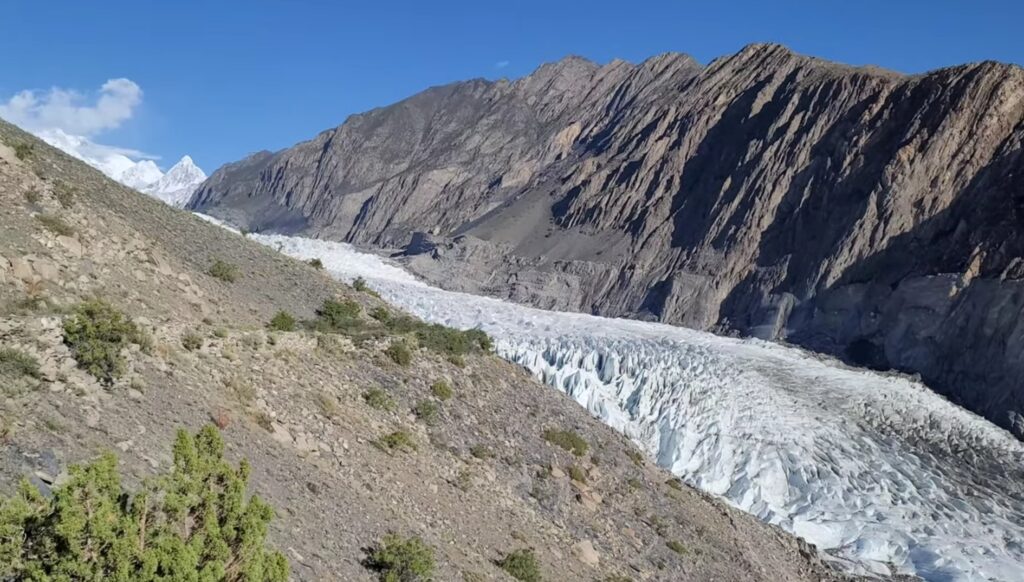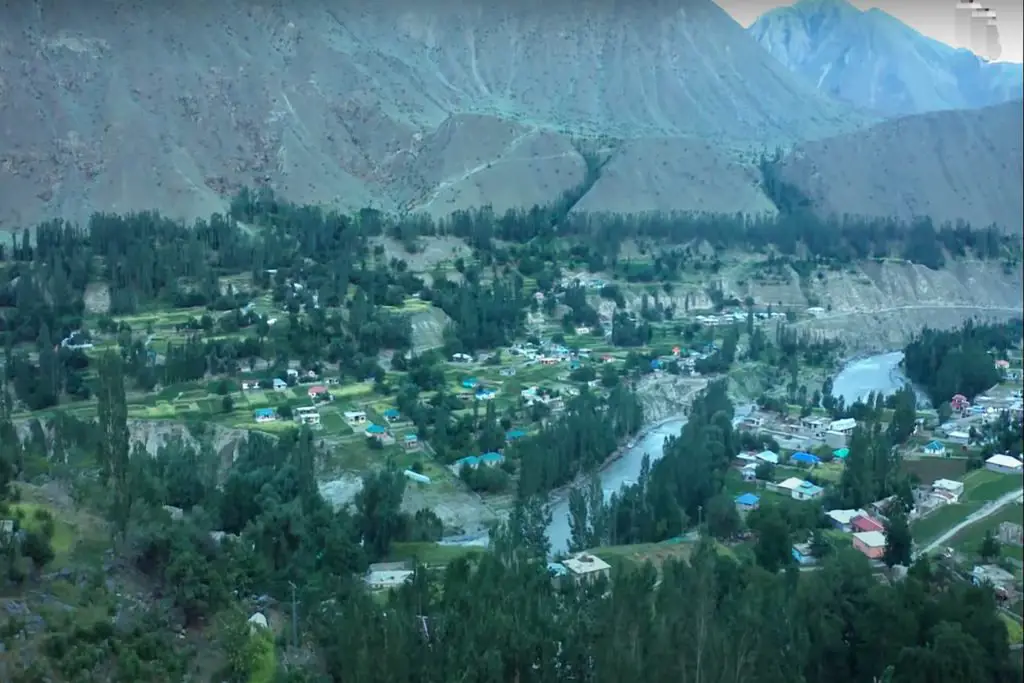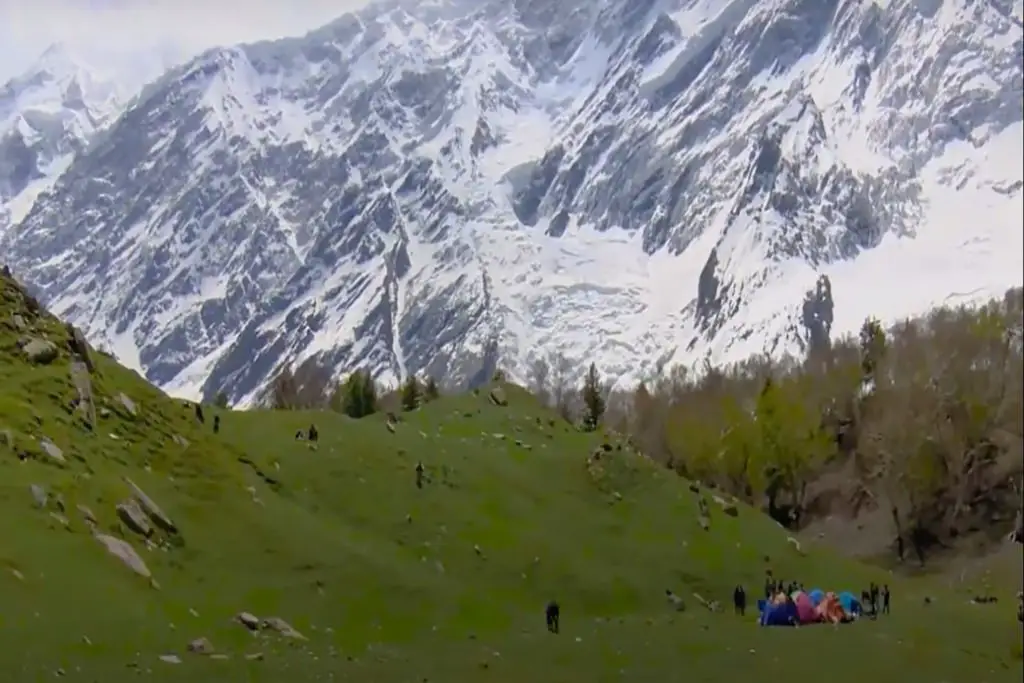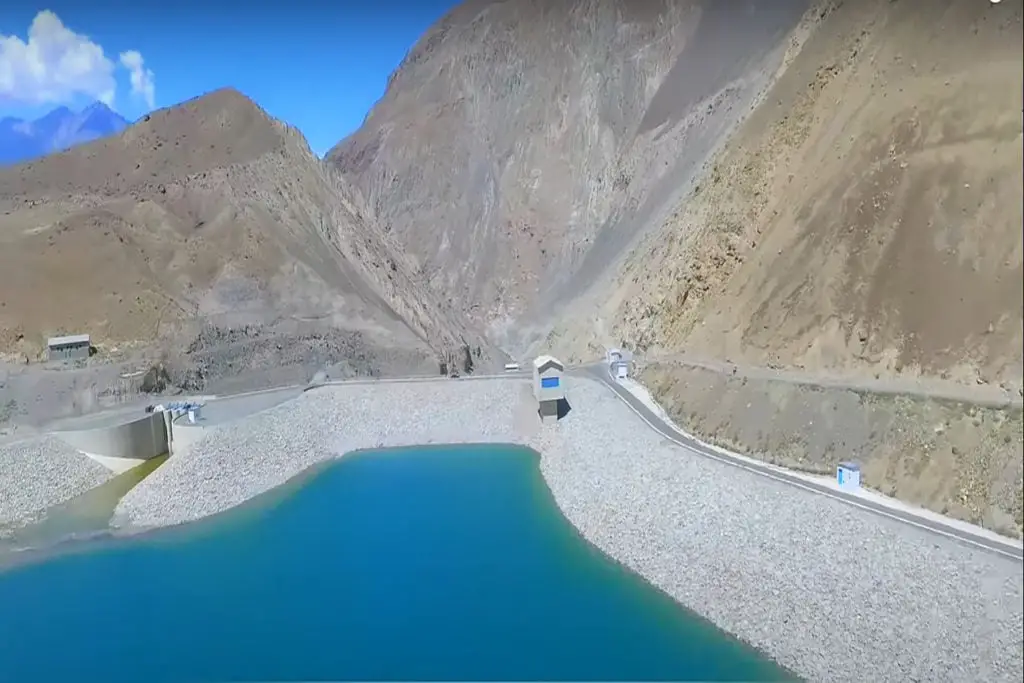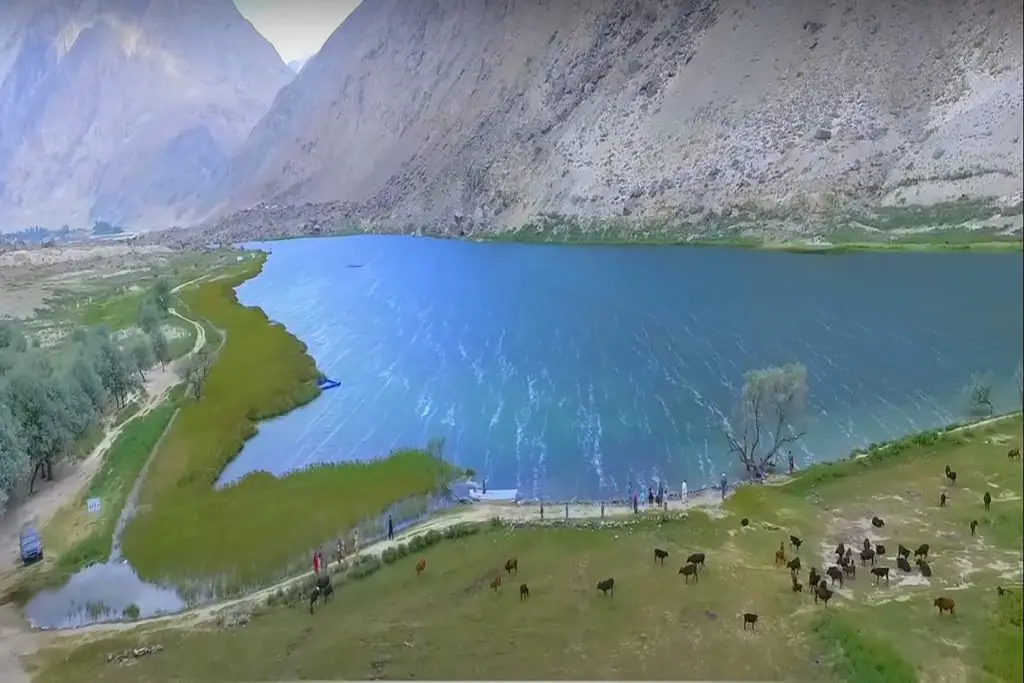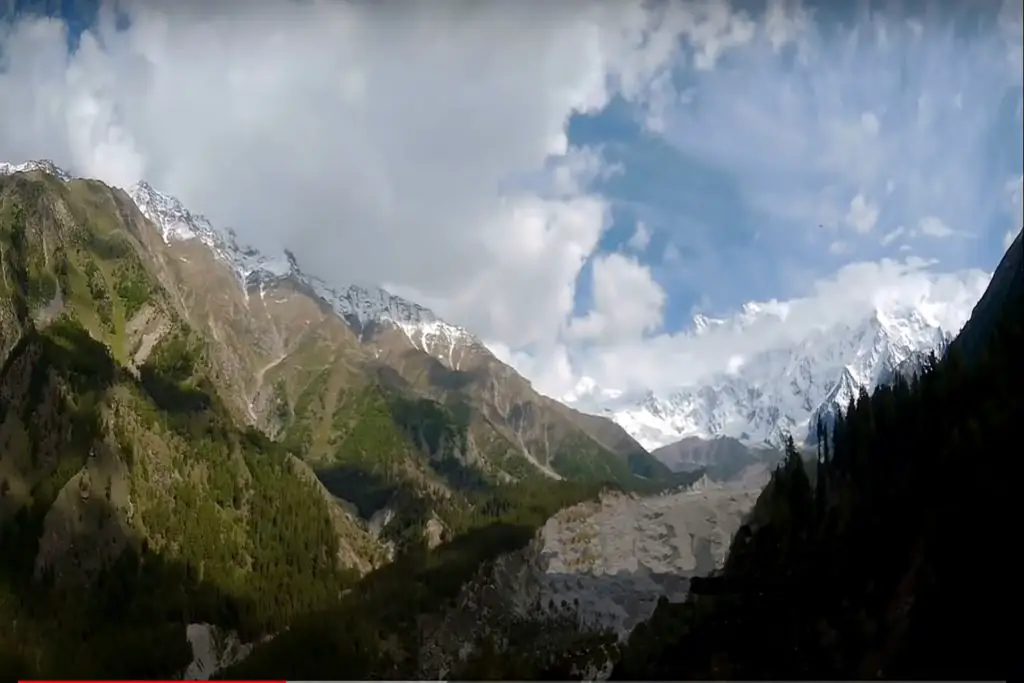The Bualtar Glacier, situated on the northern slope of the Lesser Karakoram in the Nagar district, is a medium-sized glacier renowned for its breathtaking beauty and ecological significance. Spanning approximately 20 kilometers in length and covering an area of 84 square kilometers, this glacier captivates both researchers and nature enthusiasts alike.
Bualtar Peak is a challenging and awe-inspiring mountain peak that has attracted the attention of mountaineers and adventurers for decades. Its technical difficulty and treacherous terrain have made it a coveted destination for experienced climbers, while its beautiful valleys and stunning glaciers have made it a popular destination for trekking and hiking enthusiasts. Its cultural and religious significance adds to its mystique and allure, making it a must-visit destination for anyone who loves adventure and exploration.
Location and Geographic Features of Bualtar Glacier & Peak
Bualtar Peak is a mountain peak located in the Hispar Muztagh subrange of the Karakoram Range in Gilgit-Baltistan, Pakistan. With an elevation of 7,795 meters (25,574 feet), it is the 25th highest peak in the Karakoram Range.
The Bualtar Glacier finds its home in the Nagar district, a part of Gilgit-Baltistan in Pakistan. The region’s dramatic landscape, characterized by towering peaks and deep valleys, makes it a popular destination for adventure seekers and mountaineers. The glacier starts its journey from an elevation of 7250 meters and winds its way down to a more modest altitude of 2440 meters.
Bualtar Peak Climb
Bualtar Peak is a challenging climb and has been the site of several notable mountaineering expeditions. The peak was first climbed in 1977 by a Japanese team, which climbed the peak via the southwest face. Since then, the peak has been climbed via several routes, including the northeast ridge, the southeast ridge, and the south face.
Glaciers play a vital role in maintaining ecological balance and act as crucial sources of freshwater. Bualtar Glacier is no exception. The meltwater from this glacier feeds into rivers and streams, providing sustenance to the local flora and fauna and supplying water to nearby communities for various purposes. As climate change continues to impact the region, glaciers like Bualtar face the threat of receding, which could have far-reaching consequences for the delicate ecosystem and the livelihoods of people dependent on them.
One of the notable ascents of Bualtar Peak was made in 1989 by a British team, which climbed the peak via the southeast ridge. The team faced difficult weather conditions and technical terrain during the climb, but they persisted and eventually reached the summit.
Bualtar Peak is also a popular destination for trekking and hiking enthusiasts, who are drawn to its stunning scenery and beautiful valleys. The peak is surrounded by several beautiful valleys, including the Hispar Valley, which is known for its stunning glaciers and rich culture.
Scientific Research on Bualtar Glacier
Beyond its environmental significance, Bualtar Glacier serves as a research site for glaciologists and climate scientists. These researchers study the glacier’s movements, changes in size, and behavior to better understand the implications of climate change on the region. By analyzing data collected from such glaciers, scientists can make more accurate predictions about future environmental changes and formulate strategies to mitigate their impact.
Tourism and Local Communities
The mesmerizing beauty of Bualtar Glacier also draws tourists and adventurers from around the world. Trekking and mountaineering enthusiasts are particularly drawn to this region, as it offers a challenging yet rewarding experience. However, it is essential for travelers to be mindful of their ecological impact and adhere to responsible tourism practices to preserve the delicate ecosystem.
Additionally, local communities living in the vicinity of the glacier often have deep cultural connections to the natural wonders around them. The glacier’s meltwater, as well as the surrounding flora and fauna, are integral to their way of life and livelihoods. As tourism increases in the area, striking a balance between development and conservation becomes crucial to ensure the sustainable growth of both the tourism industry and the local communities.
Apart from its mountaineering and trekking significance, Bualtar Peak also holds cultural and religious importance for the local people. The peak is considered sacred by the local population and is believed to be home to powerful spirits and deities.
Preserving the Glacial Heritage
The conservation of glaciers like Bualtar is of paramount importance to safeguard our planet’s natural heritage. Governments, environmental organizations, and local communities must work hand in hand to protect and preserve these glaciers for future generations. Implementing sustainable practices, raising awareness about climate change, and supporting scientific research are some of the steps that can be taken to protect these invaluable frozen landscapes.
In conclusion, the Bualtar Glacier stands as a testament to the majestic beauty of nature and the critical role glaciers play in maintaining ecological balance. It beckons adventurers, scientists, and nature enthusiasts alike to explore its frozen wonders while also reminding us of our responsibility to protect and preserve these delicate ecosystems for generations to come.

